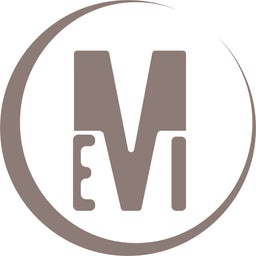Este es uno de los temas que habíamos mencionado anteriormente, y hoy decidimos profundizar más, los distintos materiales que te permiten hacer sublimación y transferir imágenes en distintas superficies, existe una infinidad de materiales y estos pueden variar por marcas, así que queremos mostrarte los que hemos utilizado, y como funcionan. Recuerda no te límites a los que lees en este post. Vamos a empezar definiendo los tipos.
Tenemos el más básico, las hojas de sublimación, existen distintos tipos de estas hojas, están las que dicen "textprint" de un lado, las que tienen la cara rosada, las que son blancas por ambas caras, y así continúa la lista, la principal diferencia de estas es el nivel de tinta de sublimación que absorben y cuanta de esta pasan al material final, siempre te recomendamos hojas de calidad para que tus trabajos queden lo mejor posible. Las hojas de sublimación tienen un resultado permanente, y funcionan exclusivamente con las tinta de sublimación. Debes recordar, que estas solamente funcionan con materiales que tenga contenido de poliéster, o las tazas, platos, gorras, etc con los recubrimientos especiales.
Luego tenemos, las hojas de papel transfer, para telas oscuras, claras o de algodón, pueden para impresoras tanto inkjet como laser, estas hojas ofrecen una terminación de mayor brillo, te permiten trabajar en superficies de cualquier color y cualquier material, en el área textil, la desventaja es que al ser un material externo que se coloca en la ropa, no presenta gran durabilidad, y el material puede irse degradando con el paso del tiempo y las lavadas. ¿Cómo identificarlas? las de cuadros azules son para telas oscuras, las de cuadros rojos son las de tela clara y las de algodón son las de cuadros amarillos.
También tenemos las hojas de subliflex, este material requiere de la impresora de sublimación de la marca Sawgrass, para hacer la impresión, luego se recorta con un plotter de corte, y por último se plancha sobre la tela, su acabado tiene una textura parecida a las de papel transfer, pero con mayor durabilidad. En el caso de este material para obtener distintos acabados, hay que darle varios planchados con un papel siliconado o de teflón.
Y por último, el vinil textil, existe el vinil textil imprimible, el vinil textil de corte, todo depende de la necesidad de tu proyecto. El vinil textil de corte, consiste en un vinil que se corta y luego procede a adherirse en la ropa, según la marca se pueden obtener distintos acabados, y texturas, algunas son casi imperceptibles, mientras otras son bastante gruesas, también está el vinil textil imprimible el cual utiliza tinta ecosolvente, luego de corte y se procede a sublimar. Y así continua la lista de materiales.
Ahora, como siempre mencionamos, no se limiten a las opciones que les presentamos, siempre busquen técnicas nuevas, que sean convenientes para ustedes, y como queremos abrir esa parte de curiosidad, comentaremos más tipos de papeles existentes:
- Sublicottom film: consiste en una tela que se coloca en el algodón y se sublima, para luego sublimar las hojas de sublimación normal encima de la tela de algodón. Este proceso permite la sublimación directa, porque la tela que se colocó en el primer proceso de sublimación es para darle un toque de poliéster a las fibras de algodón para transferir la imagen.

- I-Transfer(Neenah TECHIPRINT, entre otras marcas): este es un papel para transferir imágenes en superficies rígidas, es decir, en tazas de color, bloques de madera, etc, funciona exclusivamente con impresiones hechas a láser. Y al ser un proceso completamente externo, se siente la terminación y junto con el transfer se va degradando con el tiempo.

- Forever Multitrans Foil: este papel funcional principalmente en tazas, para darles un acabo brillante a los dibujos y diseños, los resultados se obtienen de un solo color, y para funcionar las impresiones deben realizarse en una impresora láser.
Como hemos comentando varias veces, estas son algunas de las opciones que te presentamos, pero existen muchisiiiiiimaaass opciones para transferir imágenes en distintas superficies, así que te recomendamos que te mantengas investigando para que puedas dar las mejores calidades en tus proyectos. Y recuerda "Si está en tu mente, puedes convertirlo en real", así que si está en tu mente, hay un material para crearlo.


